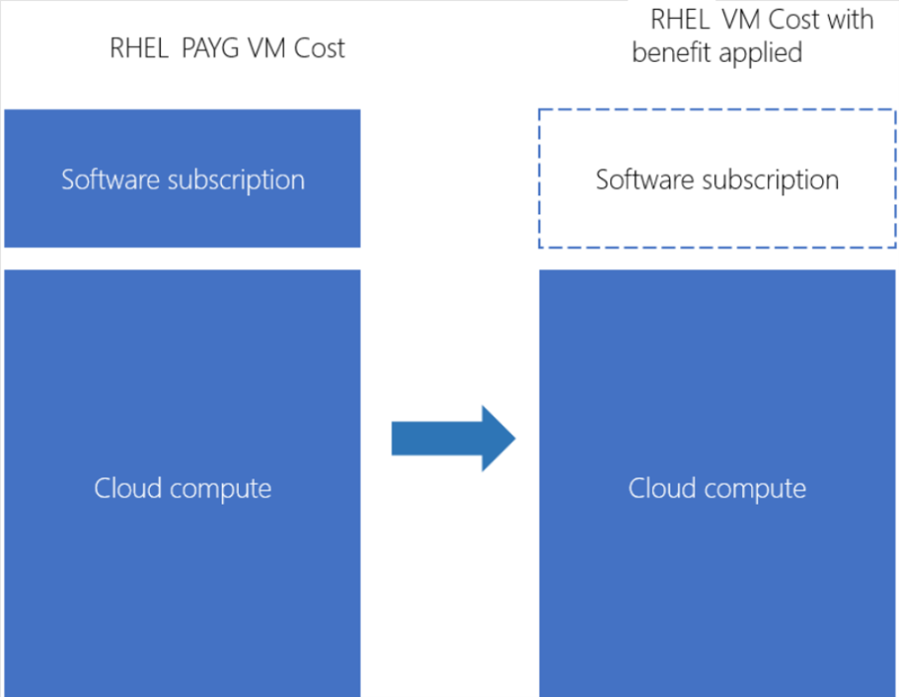How Red Hat on Azure works
How RHEL works
RHEL provides a tested secure and supportive base on which you can build your enterprise-class applications and services. RHEL combines the Linux kernel with hundreds of industry-leading open-source projects into a distribution with a 10-year support lifecycle. Red Hat works with Azure and its other network partners to ensure compatibility across multiple architectures and deployment platforms.
How Azure Red Hat OpenShift works
Azure Red Hat OpenShift is OpenShift that Microsoft and Red Hat work together to manage and support. With Azure Red Hat OpenShift, you don't have any VMs to operate and no patching is required. Microsoft and Red Hat patch, update, and monitor your main, infrastructure, and application nodes. Your Azure Red Hat OpenShift clusters are deployed into your Azure subscription and are included on your Azure bill.
How OpenShift works
Running containers in production with Kubernetes requires extra tools and resources, including image registry monitoring, storage management, networking, and logging and monitoring tools - all of which must be versioned and tested together. Building container-based applications requires even more integration work with middleware, frameworks, databases, and CI/CD tools. OpenShift combines these capabilities into a single platform, bringing ease of operations to IT teams while giving application teams what they need to execute.
OpenShift is a fully compliant instance of upstream Kubernetes, hardened with hundreds of fixes that address defect, security, and performance issues in every release. It's integrated with and tested against dozens of technologies and provides a robust, tightly integrated platform.
Differences between OpenShift and Azure Red Hat OpenShift
OpenShift is the platform that runs your applications. To provide that platform, OpenShift relies on infrastructure components like VMs, storage, load balancers, and other network components. The difference between an OpenShift subscription directly from Red Hat and one provided by Azure Red Hat OpenShift is that Azure Red Hat OpenShift also includes the underpinning components and the management of them.
How JBoss EAP works
JBoss EAP helps you upgrade from proprietary or outdated middleware to an open-source platform. JBoss EAP helps increase runtime through the use of Red Hat’s application modernization and migration solutions. The JBoss approach minimizes your effort, time, and risk by reducing app costs, improving operational efficiency, and boosting developer productivity.
JBoss EAP is part of the Red Hat Application Services portfolio of middleware products, which helps users create, integrate, and automate applications. Red Hat Application Services supports your hybrid cloud journey by running the same workloads on-site, in the cloud, or within a container platform, like Red Hat OpenShift.
Whether you already have existing licenses JBoss subscriptions on-premises or are starting fresh with new subscriptions on Azure, the Red Hat Cloud Access program allows you to use any JBoss EAP subscription. You can use a subscription to install JBoss EAP on your own Azure VM or one of the on-demand operating systems from the Azure Marketplace. VM operating system subscriptions are separate from JBoss EAP subscriptions.
Licensing options for Red Hat on Azure
You can choose to Pay-As-You-Go (PAYG) or use the Red Hat Cloud Access Program to Bring-Your-Own-Software (BYOS).
With PAYG, you purchase images from Microsoft Azure at flat, hourly rates that include infrastructure and software usage rights. You pay for compute capacity by the second, with no long-term commitment or upfront payments. You can increase or decrease compute capacity on demand. These instances don't consume Red Hat Subscriptions, and they shouldn't be registered with Red Hat Subscription Management or Red Hat Satellite.
The Red Hat Cloud Access program makes your eligible Red Hat product subscriptions portable, allowing you to choose the best architecture and infrastructure for your needs. The terms of your subscription with Red Hat, including pricing, remain the same. You work directly with your Red Hat sales representative to determine sizing and pricing when moving to a certified cloud provider. Under this scenario, you pay Red Hat for subscriptions and pay Azure for its services.
JBoss EAP deployment and pricing
There are many supported ways to deploy JBoss EAP on Azure, including as an application in Azure App Services, on VMs from the Azure Marketplace or your own custom-built images, or as a containerized application on Azure Red Hat OpenShift.
The subscriptions are available as PAYG or BYOS.
Azure Red Hat OpenShift deployment and pricing
An Azure Red Hat OpenShift cluster consists of three main nodes and two or more worker nodes. Main nodes and worker nodes run on Azure VMs and are billed at Linux VM pricing. Worker nodes have an extra cost for the OpenShift subscription component.
Azure Red Hat OpenShift is only available as PAYG. Compute, networking, and storage resources consumed by your cluster are billed according to usage.
Can I use my Azure Hybrid Benefits (AHB)?
Yes. The Red Hat Cloud Access program applies AHB for the same net effect.
